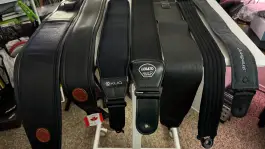When PreSonus let us know about their first gear built specifically for streaming and sent us the original Revelator USB mic for review, one of the first things we asked them was an obvious question.
“PreSonus is a pro audio company who knows what they’re doing–why a condenser mic for streaming instead of a dynamic mic?”
Their response actually surprised us. “Oh, don’t worry, that’s coming. 😉 “
Okay, so the winky face is added by us for effect, but they absolutely knew that the Revelator Dynamic mic was in the wings and the company was eager to get it into users’ hands.
Now that it’s been out for a little while and we’ve had some hands-on time with it, we’re excited to lay out our thoughts on the Revelator Dynamic mic as well as how we feel it stacks up with the rest of the Revelator lineup.
Disclaimer: PreSonus sent us a Revelator Dynamic mic for evaluation and review purposes, but our opinions are our own. PreSonus does not have any editorial control over our article nor have we been compensated for a positive review.
Contents
- 1 Summary of our review of the PreSonus Revelator Dynamic
- 2 What is the PreSonus Revelator Dynamic microphone?
- 3 What is the difference between the Revelator Dynamic USB mic and the original Revelator USB mic?
- 4 PreSonus Revelator software
- 5 Revelator Dynamic audio quality
- 6 Comparing the Revelator Dynamic to the competition
- 7 What don’t we like?
- 8 Final thoughts
Summary of our review of the PreSonus Revelator Dynamic
- Professional bus-powered USB-C-compatible dynamic microphone for vocal recording, podcasting, streaming, vlogging, gaming, and more
- Designed for your voice: Custom-designed dynamic microphone capsule provides vocal clarity and superior off-axis rejection
- Professional sound made easy: Professionally crafted Presets make you sound like a pro with a single click. You can also create your own custom presets to share, save, or produce on the go.
Last update on 2025-07-03 / Affiliate links / Images from Amazon Product Advertising API
After checking out the latest offering in PreSonus’s streaming-focused Revelator line, we can confidently say that the Revelator Dynamic is a surprisingly fantastic microphone that outperforms other mics in the category.
We’ve personally compared the Revelator Dynamic to several popular competitor mics in the same price range and market segment and feel that it is a go-to mic for anyone looking for a solid stream-friendly mic, especially for users who want an easy path to a great sound.
-
A dynamic microphone offers better noise rejection than condenser mics
-
Sounds like a dynamic/condenser hybrid
-
Great-sounding mic for almost any voice type
-
Excellent plosive rejection
-
Built-in onboard DSP for effects such as compressor, EQ, limiter, noise gate, and more
-
Improved mic mounting compared to the condenser Revelator
-
A bit noisy at higher gain levels, but sounds fantastic at lower gain
-
Would be nice if it had an XLR connection in addition to the USB connection
What is the PreSonus Revelator Dynamic microphone?
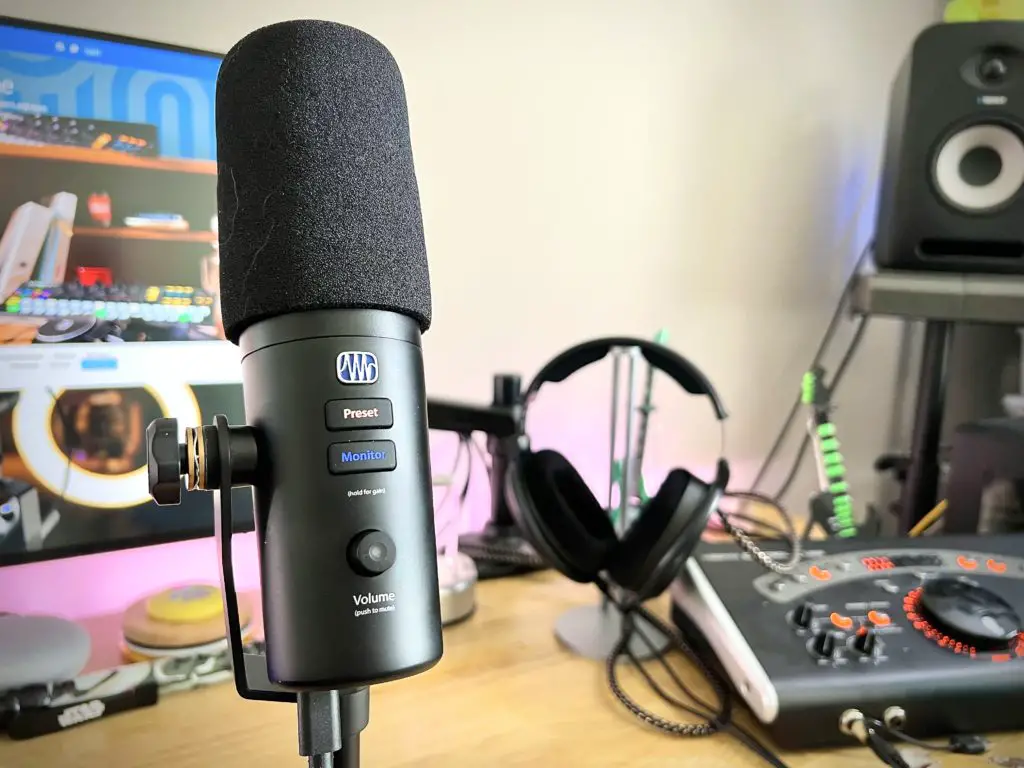
The PreSonus Revelator Dynamic is a USB-powered all-in-one microphone and interface purpose-built for streamers and other people who want a fully contained audio solution that just works. It is essentially a mic, audio interface, and post-processing suite rolled into one small package.
Looking at the mic aspect of the Revelator Dynamic, it is an end-address cardioid dynamic microphone with a frequency range of 20 Hz to 20 kHz. The mic capsule and body design appear to have been built off of the existing PreSonus PD-70 dynamic mic, which was a well-received mic in its own right.
Dynamic mics are often desired more than condenser mics for streamers because they reject background noise (like keyboard and mice) better thanks to their lower sensitivity. Most USB mics are condenser mics, and the Revelator Dynamic now enters into the small company of USB dynamic microphones.
Onboard effects processing
What sets the Revelator Dynamic (and all of the Revelator products) is the onboard DSP (digital signal processing) tools that make this a streamer’s dream mic. The Revelator Dynamic has built-in effects processing to handle all of your post-processing needs but in real-time.
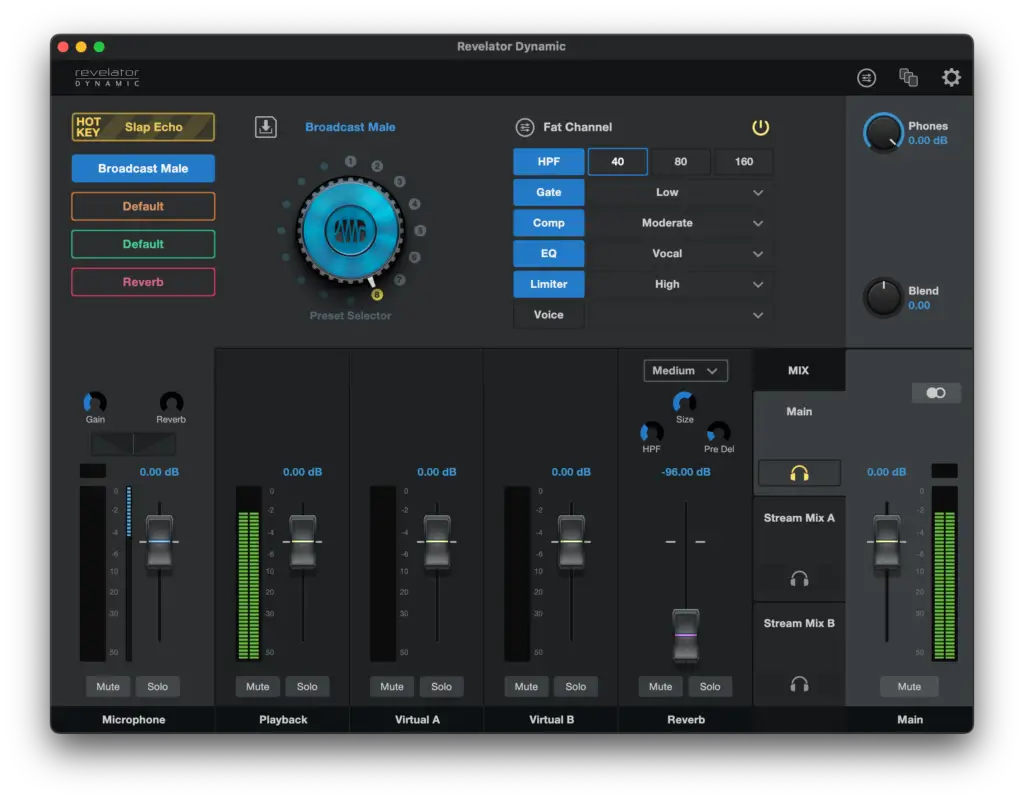
This removes the need for third-party plugins like VSTs loaded into OBS or Xsplit and also frees up your CPU cycles for video encoding and/or game FPS performance.
These effects include:
- High-pass filter (HPF)
- Noise Gate (Gate)
- Compressor (Comp)
- Equalizer (EQ)
- Limiter
- Vocal effects (Voice)
The HPF, Gate, and Limiter are single-function tools, whereas the Comp, EQ, and Voice have a few different modes for each of those sections. Comp has Standard, Tube and FET modes and EQ has Standard, Passive, and Vintage modes.
Where those tools have different styles of the same tool, Voice has multiple different effects grouped under the same Voice tab. You’ll find a Doubler, a De-Tuner, a Vocoder, a Ring Modulator, Filters, and a Delay.
These are mostly used for creating special effects like a robot voice, pitch-shifting, or other similar effects. Reverb is handled on the main Microphone channel strip.
Loopback and audio routing
One of the key benefits of the Revelator is the ability to route all of your audio through the Mixer panel. With this loopback functionality, you can not only have your mic audio be sent to your stream software, but also the in-game audio, separate music, or a video call or voice chat with someone else and still have full mixing capabilities over all of the sources separately.
Without a loopback function, you would not only need to control the volume levels through the Windows volume controls buried away in the OS, but you would also need a separate app like Voicemeeter to handle the audio routing.
All of the Revelator products offer the loopback channels, and we’re glad to see PreSonus deliver this across their lineup.
Revelator Dynamic physical build and features
If you are familiar with the original Revelator then you know exactly how this mic is controlled. The same button layout is found on the Dynamic so learning the new mic is a breeze. The control knob feels more solid than on the original–perhaps our copy was a bit wonky, but we do like to see that it’s a bit more solid.
The build of the Revelator Dynamic differs away from the original condenser version and inherits the design of the PreSonus PD-70, their XLR dynamic mic. The PD-70, in turn is fashioned in the vein of the Shure SM7B and other dynamic mics that took that look as inspiration.
The extra bulk added to the Revelator Dynamic as compared to the PD-70 is likely required to house the audio interface components of this mic. You’ll find a USB-C (USB 2.0 protocol) port to connect the integrated 24-bit/96kHz audio interface and a 3.5mm headphone output for monitoring.
There is also a small thread mount on the bottom between those two ports (probably a leftover from the Revelator condenser mic which required an adapter to connect to a mic stand/mount), as well as a yolk to mount the mic on either the included desk stand or any standard microphone mount.
Apple Silicon M1 and M2 Mac compatibility
All of the Revelator USB mics and audio interfaces are compatible with M1 Macs, and presumably any forthcoming Apple Silicon like the M2. We would advise checking PreSonus’ Apple Silicon support document for further details. It also outlines support for Universal Control, Studio One, and other PreSonus hardware as well.
What is the difference between the Revelator Dynamic USB mic and the original Revelator USB mic?
While there aren’t too many differences between the two Revelator mics, there are some crucial standout changes that are likely to matter to most users.
Dynamic mic vs condenser mic?
The main difference between the two Revelator USB mics is the type of microphone capsule used in each of the models. The original Revelator used a condenser mic whereas the new Revelator Dynamic uses a, well, a dynamic mic capsule.
While we cover this in much more detail in our guide to live streaming microphones, the short version is that condenser mics are typically much more sensitive and detailed thanks to the fact that condenser capsules require much less voltage to capture the same level signal as a dynamic mic.
While this is a massive oversimplification, it serves our purpose of explaining the uses for both types of mic easily.
Condenser mics will pick up more details and room noise because they’re picking up more of, well, everything. This makes condensers great for voice and singing particularly, as well as acoustic instruments like guitars and pianos.
What they don’t do well, however, is eliminating background room noise. Because of the sensitivity, it not only picks up the person speaking into the mic but also a lot more of the room sounds (echos/reverbs, air conditioners, keyboard clacks, and mouse clicks).
Dynamic mics aren’t perfect in this aspect, but they do a better job in general and as such are a go-to mic style for most streamers. Add to the fact that some people love the “broadcast” sound signature that some dynamic mics are famous for and you have a desirable mic for close proximity use and noise rejection.
Body styling and build quality
The body style of the Revelator Dynamic is also a bit different from the Revelator, and in our opinion, for the better. The build quality feels equally solid, there’s no flimsiness to be found, same as the original.
And not that the Revelator didn’t look great–we liked the design of the Revelator. But we feel that the Revelator Dynamic takes a step up and is really, really good looking, owing to its inheritance from the PD-70.
The built-in controls feel about the same as before. They aren’t our favorite part of these mics, but they’re not our least favorite, either.
While the desktop stand included with the Dynamic isn’t nearly as solid as the heavy unit provided with the Revelator, that’s absolutely fine because you shouldn’t put your mic on your desk anyway. This brings us to…
Mic stand mount
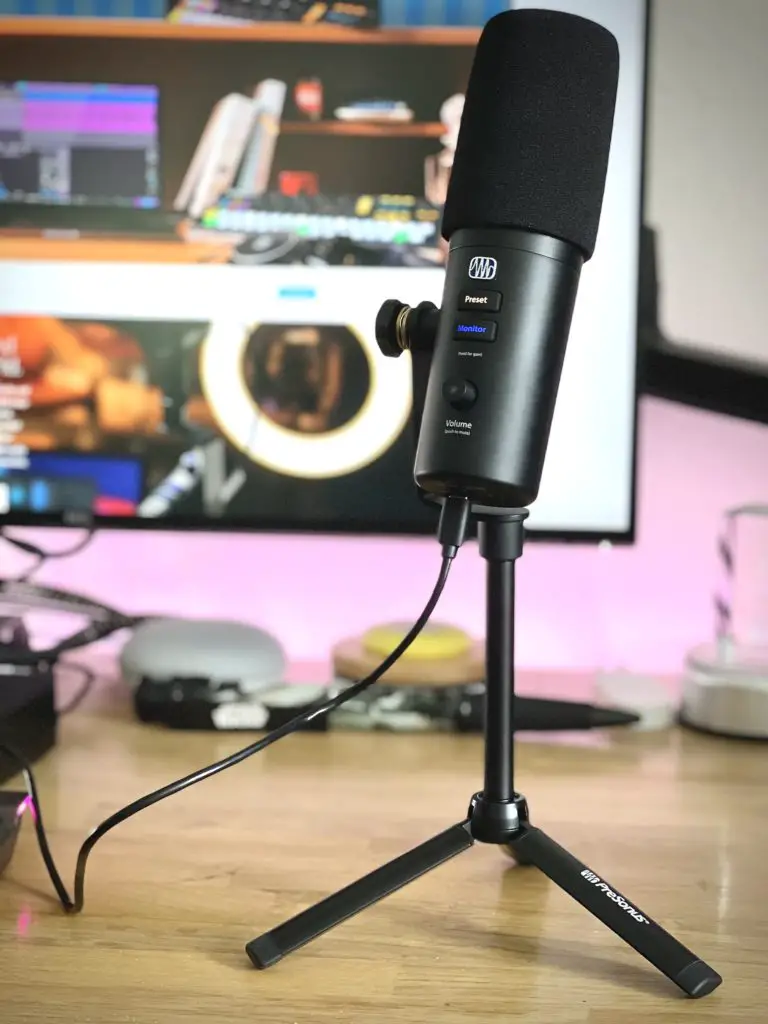
If you wanted to mount the original Revelator to a boom arm or mic stand, you would have to take the mic off the base, plug the hole in the mic where the base is mounted through the mic body, and then use this weird little adapter from whichever tiny thread was on the bottom of the mic to a standard 5/8 mic stand thread.
Not only was it awkward and felt unstable, but it also interfered with the headphone jack. Plainly put, it was our least favorite part of the mic.
Thankfully this is no longer required. The yolk can stay on the mic now (although it’s still removable for handheld use if you’re that sort of monster), and the yolk natively fits onto a 5/8 mic stand thread.
PreSonus Revelator software
All of the PreSonus Revelator devices–mics and interfaces alike–use the same Universal Control settings app and Revelator mixer panel. This means that you can use the same presets across devices and you don’t need to relearn or rebuild your settings.
This also means that the software really doesn’t differ from when we reviewed the original Revelator mic and we would point you to that article for the full rundown on the features there.
New presets in the updated Fat Channel tools
What we did notice, however, was that there was a change to some of the presets included with the later versions of the software. The last time we looked at the software there were Broadcast Male and Broadcast Female presets, and they both worked quite well.
Now we have some new broadcast presets: Broadcast Clear, Broadcast Radio, Broadcast Light, and Broadcast Basic. They all sound different and do a good job of providing suitable starting points for your post-processing, but the compressor setting on these presets are, well, kind of not great, and pump the levels aggressively.
We’d suggest creating your own custom preset and tweaking the settings on the Standard Compressor here to be less aggressive or just use a preset like Moderate, which will switch to the FET Compressor with more pleasing settings out of the box (we recreated the Broadcast Male settings from the old preset as much as we could for a comparison).
To be fair, this is not specific to the Revelator Dynamic but would affect any Revelator device using the updated presets. It has nothing to do with the Revelator Dynamic itself, but it is something we noticed with the latest software.
Beyond that, we still love the Revelator software. The Fat Channel tools are top-notch quality and eliminate the need for loading additional VSTs into your streaming software. These come from PreSonus’ expertise with their Studio One DAW for audio recording and engineering, and they sound fantastic.
Revelator Dynamic audio quality
Just like with the original Revelator we reviewed, we recorded a bunch of tests in Reaper, both with and without the Fat Channel presets engaged.
This time we also compared our Revelator to even more competitors. We wanted to see how it compared to the rest of our small mic locker which happens to include mics that the Revelator Dynamic would be going up against in the market.
Dialog
When using the Revelator Dynamic mic itself without any of the Fat Channel post-processing, we get a fairly neutral sounding mic tone. The Revelator Dynamic feels very balanced and equally emphasizes lows and highs to hit a sweet spot that should work for nearly any voice.
Whereas the Revelator condenser mic was markedly darker in tone than its competition, we dare say that the Revelator Dynamic not only has some really well-focused lows but some pleasant sparkle in the top end that we were not expecting from a dynamic mic in this price range.
We have to say that we’re quite pleased with the sound of the Revelator Dynamic even before adding any of the onboard DSP to sweeten things up. There’s plenty of presence in the mid-highs, highs, and air frequencies but it doesn’t feel harsh at all. You get an amount of smooth detail in the top end of the mic that is almost confusing.
Meanwhile, the lower frequencies are tight. Boomy (but not too boomy), thick (but not muddy), and powerful. Burly, even. None of this is overpowering, however, and while a high-pass is usually a good idea it doesn’t feel mandatory on this mic for most voices.
Thankfully the good news continues to the low-mids and mids. There aren’t any boxy tones that we could get out of this mic, and nothing sounded nasal, thin, or squawky.
Speaking of low end, this mic is surprisingly great at handling plosives. While it’s not completely immune to vocal pops, it’s excellent at minimizing most normal plosive sounds, even on P’s.
Sibilance, or the hissing sounds of S’s and whatnot, is also handled quite nicely by the Revelator Dynamic. In our experience, any mic in this price range that handles plosives and sibilance this good results in less pronounced lows and less detailed highs, but this mic defies that and sounds good while minimizing those vocal artifacts.
To be honest, we’re a bit surprised at how good this mic sounds. If you’ve ever wondered what it would be like if a broadcast-style dynamic mic and a silky-yet-detailed condenser mic had a baby, it would be the Revelator Dynamic. This is a good thing.
Of course, adding on the Fat Channel effects we loved so much from our Revelator condenser review cranks that quality up. Being able to rely solely on the onboard DSP and get quite a viable signal processing without needing to build up your own VST collections is a godsend, and is massively freeing to a content creator.
Trust us when we say that you do not want to be stuck in endless comparisons of “does this compressor sound better than this one”, and “which limiter sounds more transparent?”. The Fat Channel effects available on the Revelator line get you out of that analysis paralysis.
Overall, we can’t get over how good this mic sounds. There are a few caveats and things we’d like to see addressed in a future version, but in general, this is a fantastic mic for streaming, voiceover, or any sort of dialog. Probably makes a fantastic vocals mic for singing, too. But we can’t sing, so we can’t test that one.
Instruments
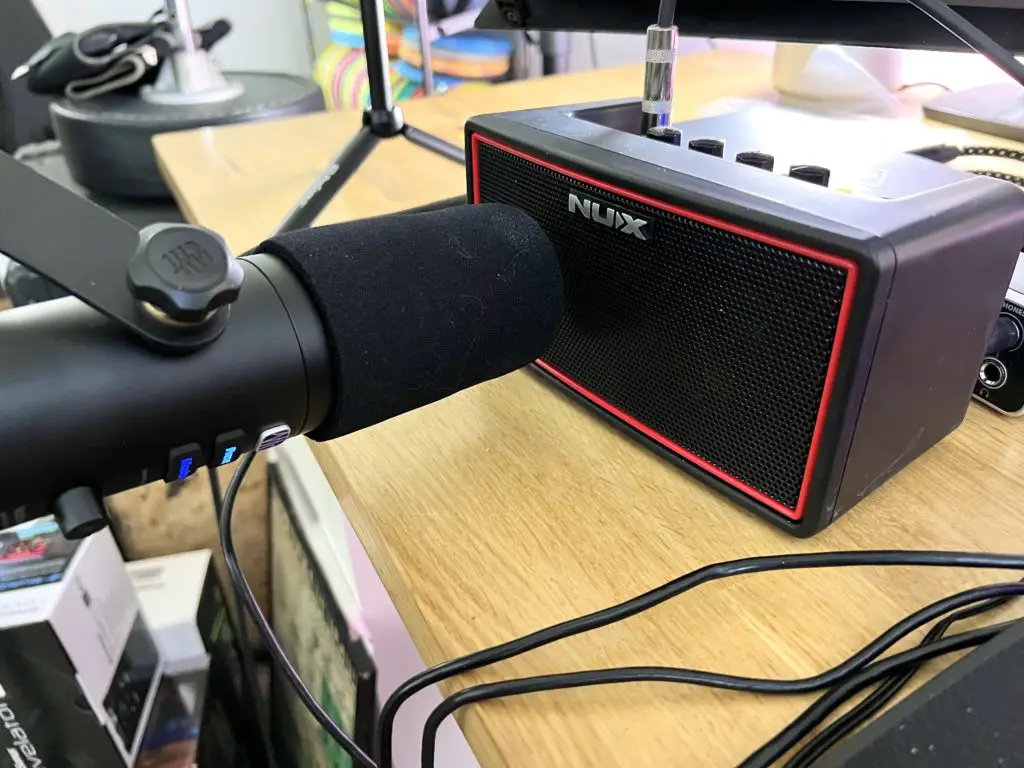
We know that this is a streaming-focused mic, and almost no one buying this mic would even think about mic’ing up a guitar cab with it. But we couldn’t help ourselves (again) and figured we’d give it a shot. Besides, dynamic mics are great for guitars so might as well give it a go!
The Revelator Dynamic is a far better guitar mic than its condenser predecessor. This is mostly due to the previously discussed characteristics–not nearly as dark, has tight low end, plenty of presence, no midrange honk, and all of that translates into a surprisingly capable guitar amp mic.
Granted, we’re not mic’ing up a 4×10 with Celestions or anything–in fact, quite the opposite. But with our trusty little portable practice amp and a bit of placement experimentation, we can get a decently usable tone out of the Revelator Dynamic.
On a clean guitar tone there’s plenty of detail and spank without getting the low end getting out of hand. It’s bright, but again, not too bright. It’s surprisingly pleasant on clean guitars.
With distorted guitars, the mic doesn’t break down and get fizzy, boxy, or muddy. It actually can get a decent metal tone. Of course, some EQ and post-processing massaging will help things, but we can honestly say we wouldn’t be hard-pressed to record some good metal with this mic if we needed to.
Headphone output
The Revelator Dynamic is positioned as a total audio interface solution, and as such, has a 3.5mm headphone output available so you don’t need a separate audio device for that.
We tested the Revelator Dynamic headphone output as compared to our other interfaces on an older run of Status Audio CB-1 closed-back headphones (32Ω impedance) and a pair of Sennheiser x Drop HD 6xx (300Ω impedance).
The headphone output on this mic is listed at 22.6 mW at 16Ω impedance. While we don’t have the tools to measure actual real-world performance, we can compare it to others that have been measured (hat tip to Julian Krause for his awesome headphone output matrix!).
In our tests, the headphone output of the Revelator Dynamic has the lowest total output on our test headphones. The HD 6xx was clearly less loud than the CB-1, which is to be expected. Both were usable, however, as long as you don’t need to overpower the noise in your space.
Both headphones sounded as we would expect, otherwise, as compared to our test interfaces. There isn’t enough of a sonic difference when using the headphone out of the Revelator Dynamic to warrant more critical listening.
As we’ve discovered in other tests, audio interfaces in this price range all basically sound the same for listening to music. We’re happy to say that this appears to extend to the Revelator Dynamic headphone output on both of our test headphones.
We wish it would get louder, as even with the headphone level cranked all the way up it still wasn’t quite loud enough. It tops out at just a little bit above our normal comfortable listening levels, but if it’s the only headphone out you have it’s usable within reason.
The lack of headphone power is understandable, however. With the small size of a USB mic compared to a standalone interface, our guess is that there’s a limit to the components and the related heat generation that hampers how much power can be devoted to the headphone amp output.
Revelator Dynamic headphone output as compared to other interfaces
As a point of reference, here’s how the headphone output compared to our other testing devices. The basic takeaway is that where we could almost comfortably use the Revelator Dynamic headphone output cranked to maximum, all of our other devices would not be comfortable at max volume.
The next loudest was the PreSonus Revelator io44, advertised at 30mW/channel at 56Ω (measured by Julian Krouse at about 37mW @ 16Ω, 48.10 mW @ 32Ω, and 13.60 mW @ 300Ω). The io44 offers plenty of gain for both of our headphones, even though it’s not the loudest out of our comparison.
The MOTU M2 had the next loudest headphone output. While we can’t find the tech specs from MOTU, Krouse has measured it at 13.57 mW @ 16Ω, 21.60 mW @ 32Ω, and 23.10 mW @ 300Ω.
Our loudest interface is, surprisingly, the Behringer UMC404HD, measured at 16.58 mW @ 16Ω, 17.10 mW @ 32Ω, and 4.40 mW @ 300Ω. Despite these measurements, the UMC404HD still drove both our headphones to a perceived louder volume than any of our other interfaces, second only to our Behringer XENYX CONTROL2USB studio monitor controller. It’s unhealthily loud due to the way the gain staging is built.
Comparing the Revelator Dynamic to the competition
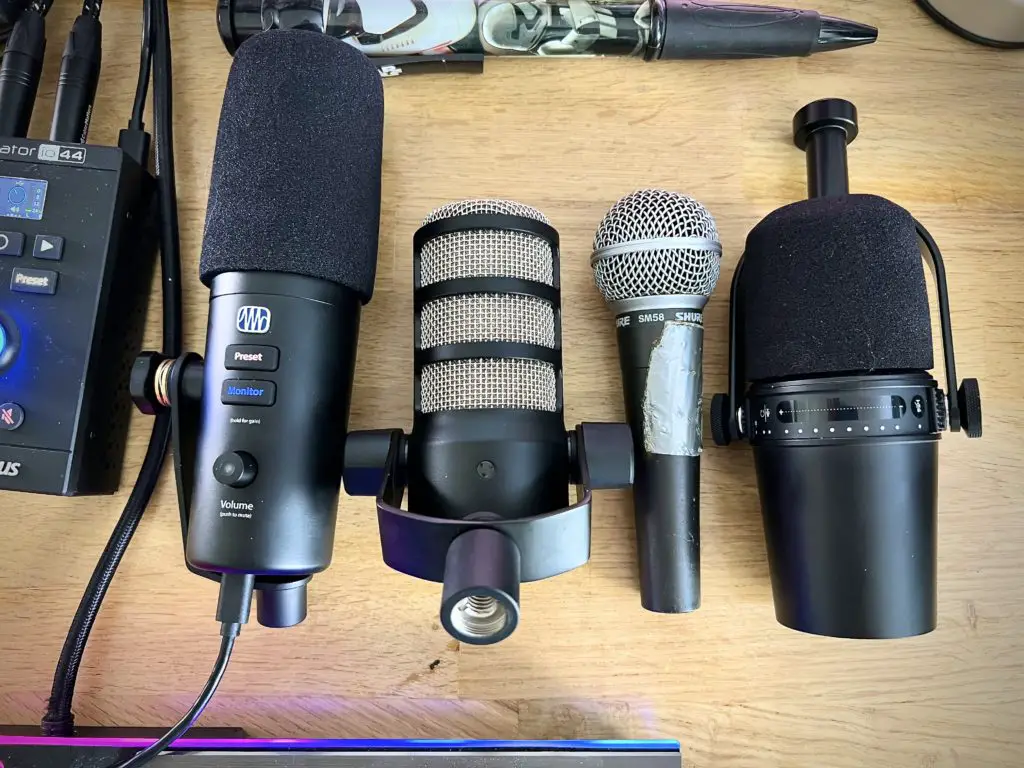
Now that we’ve taken a look at the Revelator Dynamic on its own, the inevitable question of how it stacks up to other mics will arise. The market segment that this mic is entering is pretty populated already, and there are some very popular mics that it will be competing against.
We’ve pitted the Revelator Dynamic in a few head-to-head comparisons, and have also provided audio samples of those mics for your own judgment. Take a listen to the dialog and instrument samples for each mic and see if you agree with our opinions.
Do keep in mind, however, that not every mic will perform the same for every person in every environment. Just because we got a certain result from a certain mic doesn’t mean it won’t work better for you. As always, look at more than one opinion and test them out for yourself.
Revelator Dynamic vs Shure MV7
Summary
- While the Shure MV7 is a good mic, in our tests the Revelator Dynamic outperforms the MV7 in almost all aspects, starting with a more full sound with greater detail and flexibility.
- The MV7 does pick up less noise at higher gain levels but both are fairly equal at lower gain levels
- The Shure MOTIV software takes care of the basics but the PreSonus Universal Control software runs circles around it.
The comparison
As we’ve mentioned before, the Revelator Dynamic’s strongest competitor is the Shure MV7. Inheriting DNA from both the legendary SM7B and SM57/58, you would be inclined to believe that this mic’s victory would be.. a Shure thing… (Fine, we’ll stop.)
Listening to the MV7, it’s not a bad mic, it’s just different. Remember that top-end sparkle we mentioned above for the Revelator Dynamic? Well, you won’t find that same quality here with the MV7. This is a more subdued, broadcast-style microphone that doesn’t want to provide that presence bump that condensers are known for.
It may also be due to the fact that the MV7 has a frequency response of 50 Hz to 16 kHz compared to the Revelator Dynamics’s wider 20 Hz to 20 kHz.
The MV7 also sounds its best when not directly on the windscreen. It seemed to feel a bit boxy yet muddy when that close to the mic and definitely improves as you back off. Even two inches makes a difference, and we’d suggest playing around with the EQ if you need to be right on this mic.
We’ll discuss this in more detail later on, but the MV7 doesn’t seem to be as sensitive a mic as the Revelator. This means that there’s a stronger fall-off when backing off from the windscreen. But that doesn’t mean that this mic isn’t loud. In fact, it’s insanely loud.
We’re not too sure about the default gain settings when the MV7 comes out of the box as we started playing with the controls before installing the MOTIV software. But when the mic is set to 21 dB it absolutely matches the Revelator Dynamic at 30 dB.
In our reduced gain test, the Revelator Dynamic was at 23 dB and the MV7 at 7.5 dB. Interestingly enough, even with the MV7 at 0 dB in the MOTIV software, it was still audible, and somehow quite loud. The Revelator Dynamic basically is inaudible at 0 dB.
While we can’t seem to locate a frequency curve for the Revelator Dynamic, we can look at the response curve of the PD-70 for a good idea of what’s going on with the Revelator Dynamic.
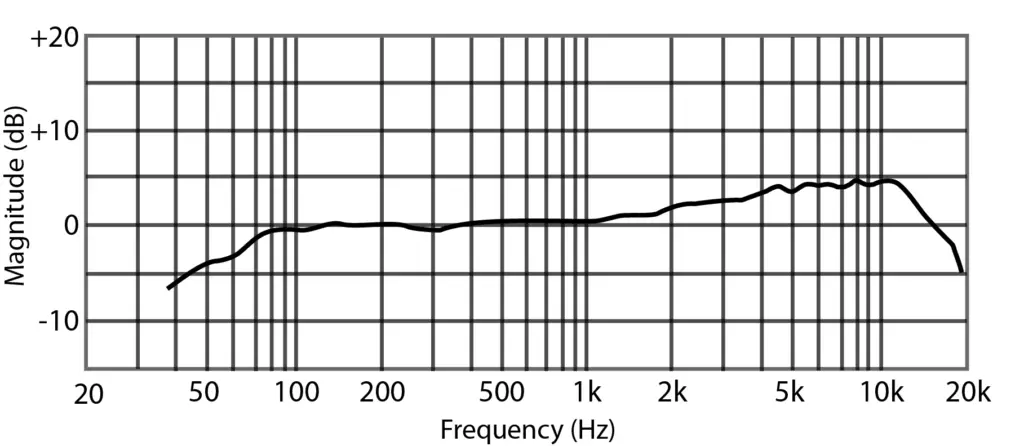
The MV7 has significant low-end tapering starting as high as 800 Hz and then plummets around 120, whereas the Revelator Dynamic PD-70 stays fairly flat all the way down to about 70 Hz before rolling off.
The PD-70 also has a significantly higher bump in the top end along with a more gradual, longer, and less severe high-end roll-off. It’s no surprise that these two mics have the character that they have.

And that roll-off isn’t necessarily a bad thing, especially if you’re looking for that typical “broadcast” sound. The MV7 is a very traditional dynamic mic with smooth tones across the board and pleasing roll-off on both ends of the frequency response. The Revelator Dynamic just has less of that roll-off as well as a presence bump on the top side.
We actually tested both the USB interface and the XLR output for the MV7 and both sound good. We feel that the XLR sounds a tiny bit better, but that could be due to any tiny change between our tests.
The Revelator Dynamic has the same foundation as the MV7 but just feels more detailed because of those bumped upper frequencies and less severe roll-off. That’s not to say that either of them sounds bad–quite the opposite.
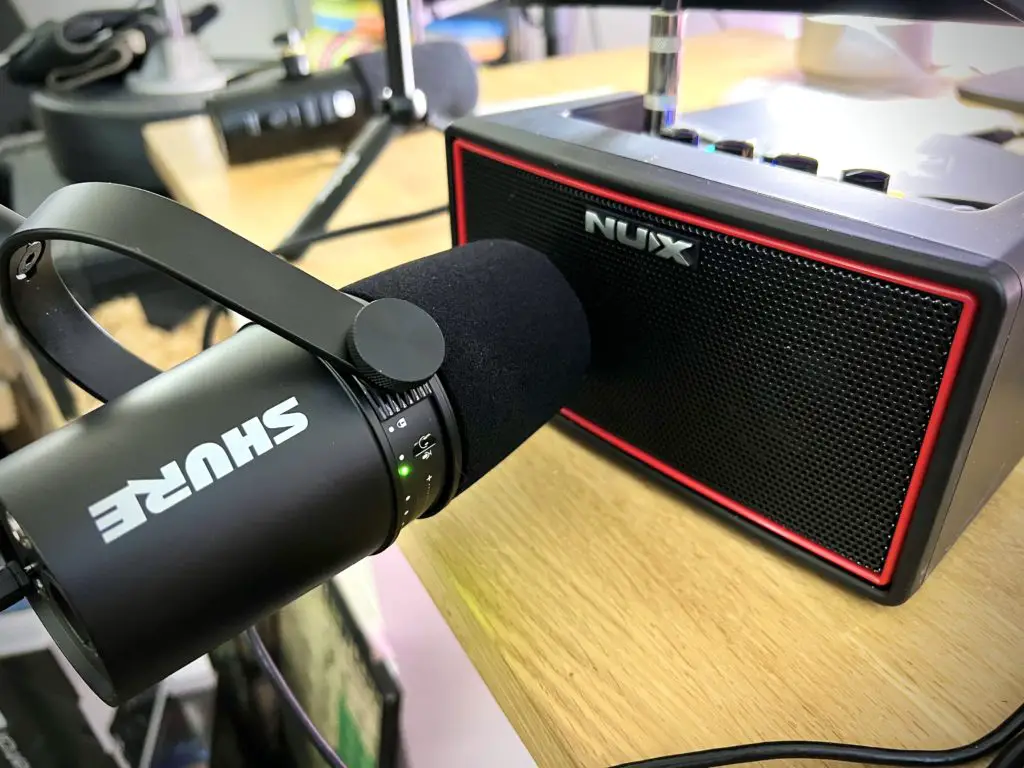
The same traits are carried over to its abilities as a guitar mic. You can definitely use the MV7 on both clean and distorted guitars and it will be usable. Extra EQ may be necessary and you might want to bump up the mid-high frequencies just a tad, but it can get the job done.
As with dialog, the XLR and USB mostly sound identical on guitars. The only difference may be related to placement changes between our tests, but we’re confident in saying that both would work just fine.
Perhaps the weakest spot of the MV7 in this comparison is the software. You get an Auto Level mode which can be configured for near or far mic placements, and then a manual mode that gives you control over your gain, four EQ presets (flat, hi-pass, presence boost, and hi-pass/presence boost combined), a limiter with no controls, a compressor with off/light/medium/heavy settings, and that’s it.
Both modes do let you control your wet/dry monitor mix for latency-free monitoring as well as saving custom presets, but there are actually no pre-made presets in either mode. You can turn on live LED meters on your mic but it’s hard to see them while using the mic properly, and there is also a Night Mode that will dim the LEDs–probably the most clever setting in the whole app.
In general, both are great mics. We do like the presence and detail in the top end of the Revelator Dynamic more, as well as its ability to handle proximity better than the MV7 despite the slightly noisier performance that the PreSonus mic provides at higher gain.
If their MOTIV software gets a much-needed update to compete with the Revelator software we could see this being a closer fight. But right now it’s tough because right now the PreSonus Universal Control app has it beat without breaking a sweat.
Revelator Dynamic vs Rode Podmic
Summary
- The PodMic sounds good for the money but looks even better for its price
- It can’t compete with the MV7, which means the Revelator Dynamic still sounds better
- No USB option, requires a separate audio interface with sufficient gain to drive dynamic mics
The comparison
The Rode PodMic is a popular budget dynamic mic meant for podcasters and streamers. It has the same 20 Hz to 20 kHz frequency response as the Revelator Dynamic, but it definitely has a different sound.
The PodMic sounds a bit thinner than other mics in our testing. It’s still a balanced mic and can sound good (especially after EQ), but it’s not going to give you the same low and low-mids or highs.
When compared to the other mics in this test, the PodMic has the thinnest in the group. While it’s not unusable, there are more full-bodied mics in this lineup. That said, if you have a particularly lower register voice this may work out in your favor. But in our tests, it just doesn’t have the fullness of the competition.
And that’s fine, especially for a budget mic. If you compare the frequency curves of the Revelator Dynamic and the PodMic, you’ll notice some strong differences.

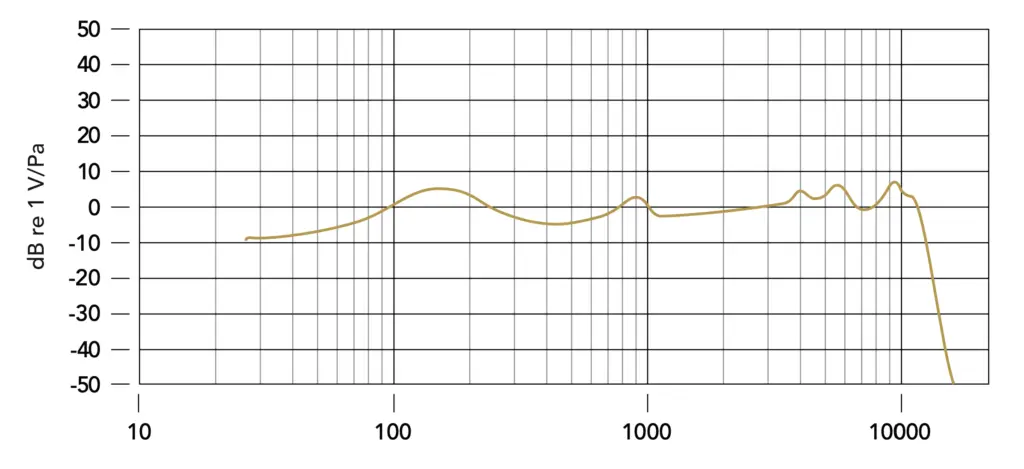
The PodMic does have a small low-end bump in the 100-200 Hz range, but it’s surrounded by a long gradual roll-off and a low-mid dip. Thankfully there’s no single strong top-end push to throw it out of balance, but this mic was definitely built to be a bit neutral while removing some areas that can create a boxy vocal tone.
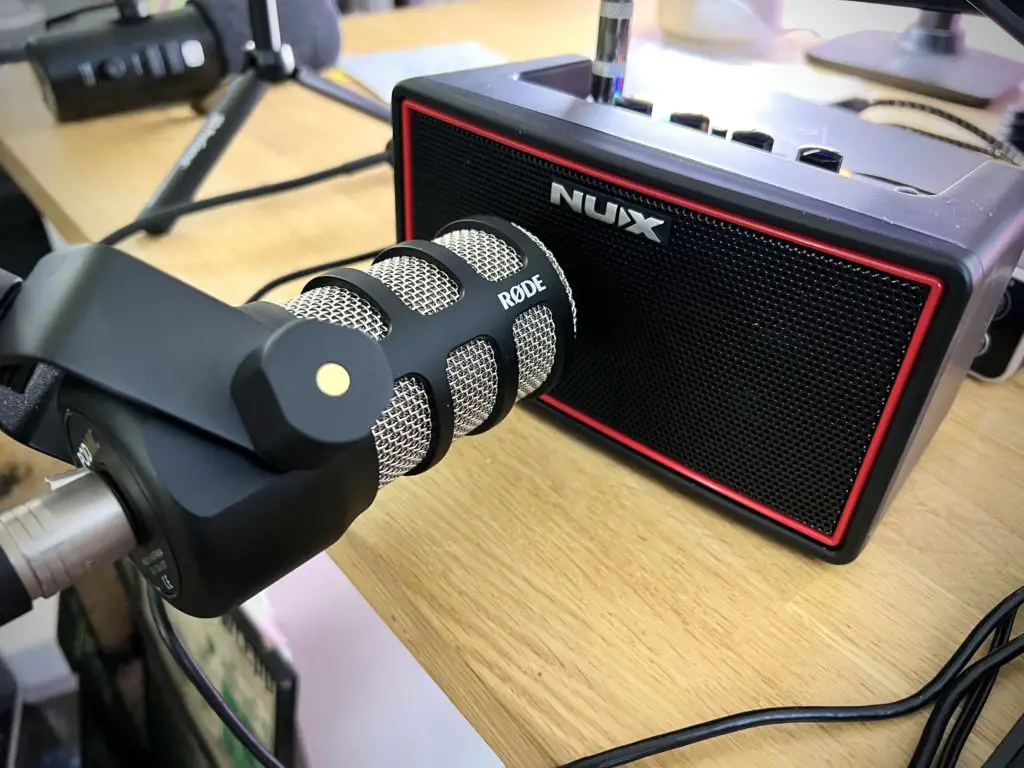
On guitars, it continues to show a thinner sound. No, it’s not the worst mic we’ve ever heard on a guitar, but it really lacks the depth of the other mics in this test. The lack of balance means that the highs stick out a bit too much on the distorted test, and there’s not enough low end to even on the clean test.
We would say that at double the cost of the PodMic you do get more than double the quality (and features) with the Revelator Dynamic, but that doesn’t mean the PodMic isn’t a good mic. It’s just not going to be for everyone, and we have a better budget suggestion for most users.
Revelator Dynamic vs Shure SM58
Summary
- The SM58 is legendary for a reason
- Actually sounds better to us than the PodMic for the same price
- Looks boring AF
- Also an XLR mic, requires a separate audio interface
The comparison
The Shure SM58 has long been the stuff of legends. The number of musicians and engineers who, while praising the mic, rattle off the joke that “You could build a house during the day with an SM58 and then gig at night with it” is still astounding to us even now. But how does it stand up compared to a modern stream/broadcast-focused dynamic mic?
Surprisingly well! The SM58 is up the family tree from the MV7 and as a result the two sound very similar. There’s a bit more mid presence with the MV7, but it’s minor and might be a trick of balance with the more solid low-end of the SM58.
And as the Revelator Dynamic had even more presence and detail than the MV7 that should show how the SM58 compares to the Revelator Dynamic.
Both the Shure mics sound quite good, but with those small differences. The SM58 has a bit more lows and mids than the MV7, but the MV7 does sound a tiny bit more present in the mid-high voice area despite being almost identical to the SM58.
It feels that this is because of the increased low-end on the SM58 that helps balance things out. This is what makes the SM58 sound a bit more full than the MV7, and gets it a bit closer to competing with the Revelator Dynamic. The difference is quite small and almost always only really noticed when A/B’ing these mics.
The SM58 has a 50 Hz to 15 kHz frequency response that is very similar to the MV7.

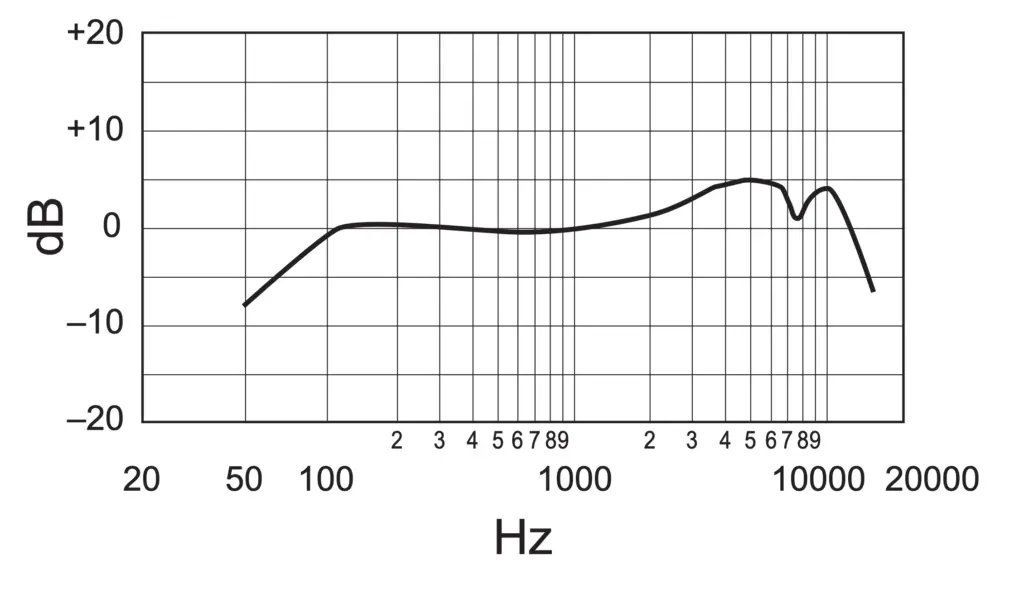

The SM58 is a closer mic to the MV7, of course, but actually has a top-end bump that comes close to the Revelator Dynamic. It still doesn’t have the low end and detail that the Revelator Dynamic shows off across the board, but it’s no slouch.
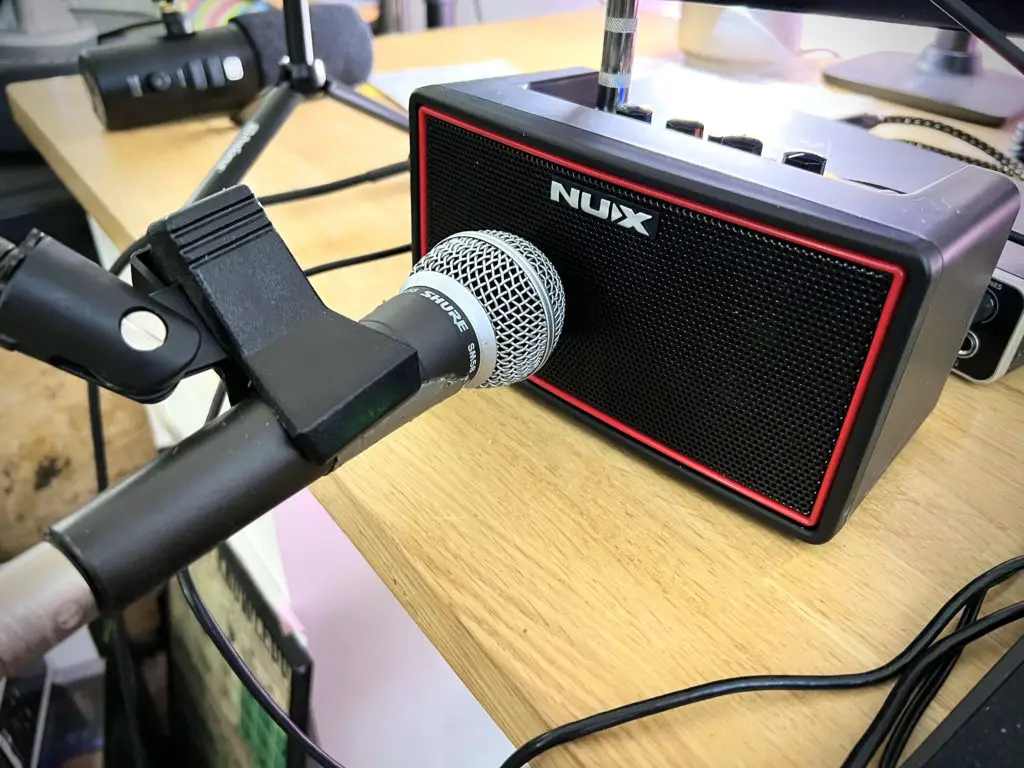
Of course, this means that the SM58 gets basically the same results as the MV7 on guitars. It’s a usable tone on both clean and distorted guitars. We prefer the Revelator Dynamic just a bit more for both tests, but the SM58 does quite well overall.
Our thoughts on the SM58 are a bit complex because we’re sort of comparing it to multiple mics. If we’re looking at it compared to the MV7, they’re almost identical in sound, but the SM58 has a slightly more full tone thanks to its more robust low end. But they both sound great.
If we’re looking at the budget $100 price point that this mic and the PodMic fit into, we’d honestly say that the SM58 is a better budget choice for most people than the PodMic–but yes, we know it just doesn’t look as cool. If you value the looks more, are okay with heavy EQ, or have a naturally low-pitched voice, the PodMic could be a good choice.
But the main point of our comparison is pitting the SM58 against the Revelator Dynamic which is again the winner in this matchup.
What don’t we like?
Only a USB mic
Okay, so this is a bit of a minor qualm, as a large portion of the Revelator lineup’s appeal is the Revelator software and built-in DSP. But with as good a microphone as the Revelator Dynamic is, it’s almost a shame to not be able to use it with any interface you choose.
If a future version offered both USB and XLR connectivity similar to the MV7, we would absolutely be thrilled. But if not, hey, we get it–it’s not necessarily a feature desired by the target audience of this microphone.
Revelator Dynamic mic noise levels
A more serious qualm, however, was the amount of noise this mic picks up at higher gain settings. With the preamp gain in the Revelator software set to 30 dB, we get plenty of signal to be about four inches off of the mic and talking normally but also more hiss than we would have expected.

We assumed we shouldn’t be getting this much noise with the preamp gain set to halfway at 30 dB, never mind the 40 dB that the mic defaults to out of the box.
Here is a test recording of both the Revelator Dynamic and MV7 recording at the same time with the original gain settings we used for the tests above:
We did test a second retail copy of the Revelator Dynamic and found the exact same behavior with that mic as well, so we can confirm it’s not a defect with our original copy.
All of the other mics exhibited about the same noise as the MV7 in our initial tests, so we were somewhat confused at first with the Revelator Dynamic being such an outlier.
In our investigation into this noise, however, we determined that this is due to how sensitive this mic is. When level matching the Revelator Dynamic to the MV7 when right on the mic windscreen, the MV7 signal falls off considerably when backing up even four inches.
Where the MV7 develops a thinner, quieter, less boomy sound at that distance, the Revelator Dynamic stays quite full and the level drop isn’t nearly as strong.
This presents some interesting findings. The Revelator Dynamic is definitely more sensitive than the MV7 at longer distances, as well as handling close proximity sources better in relation to that overall sensitivity. It feels almost logarithmic in its response, not linear at all.
Turning the gain down in the Revelator mixer panel does wonders for resolving the noise, however. Set to 23 dB instead of 30 dB reduced the background hiss quite considerably and still provides for plenty of signal to not be right on the windscreen.
The clips below are another simultaneous test of the mics where you can hear both being about 4″ off of the mic as well as right on the windscreen. There’s also some moving around and n
Things improve even further after using the Revelator effects. With the Fat Channel effects turned on and the noise gate engaged, that noise cleans right up, for the most part.
At the higher gain settings, you still hear fragments of the noise as the gate opens and closes and the compressor only accentuates this as it does its job. Reducing the gain helps clean this up.
When comparing identical recordings between the Revelator Dynamic and its closest competitor, the Shure MV7, you can really hear the difference in noise floors between the two mics at those higher gain settings. Lowering the gain evens the playing field considerably.
After noticing this and adjusting our testing accordingly, we feel that the noise levels aren’t a substantial reason to not use this mic because of its performance at the lower gain settings.
Final thoughts
PreSonus has quite literally answered our request and delivered an excellent USB dynamic mic that is a fantastic option for almost any streamer. We’re glad to say that the Revelator Dynamic does nothing but build on the quality of its condenser predecessor.
The Revelator software is consistently updated and improved (odd preset behavior notwithstanding), the mounting solution is much improved over the previous Revelator condenser version, and most importantly, the Revelator Dynamic sounds fantastic.
We’re pleased with the mic that PreSonus has delivered, as it is extremely accessible to almost everyone and it definitely earns its keep, even when compared to other heavy hitters in the category.
Is there anything we missed in our review? Any questions or feedback on our review or absolutely amateur guitar playing? Leave us a comment down below and let us know!
PreSonus Revelator Dynamic
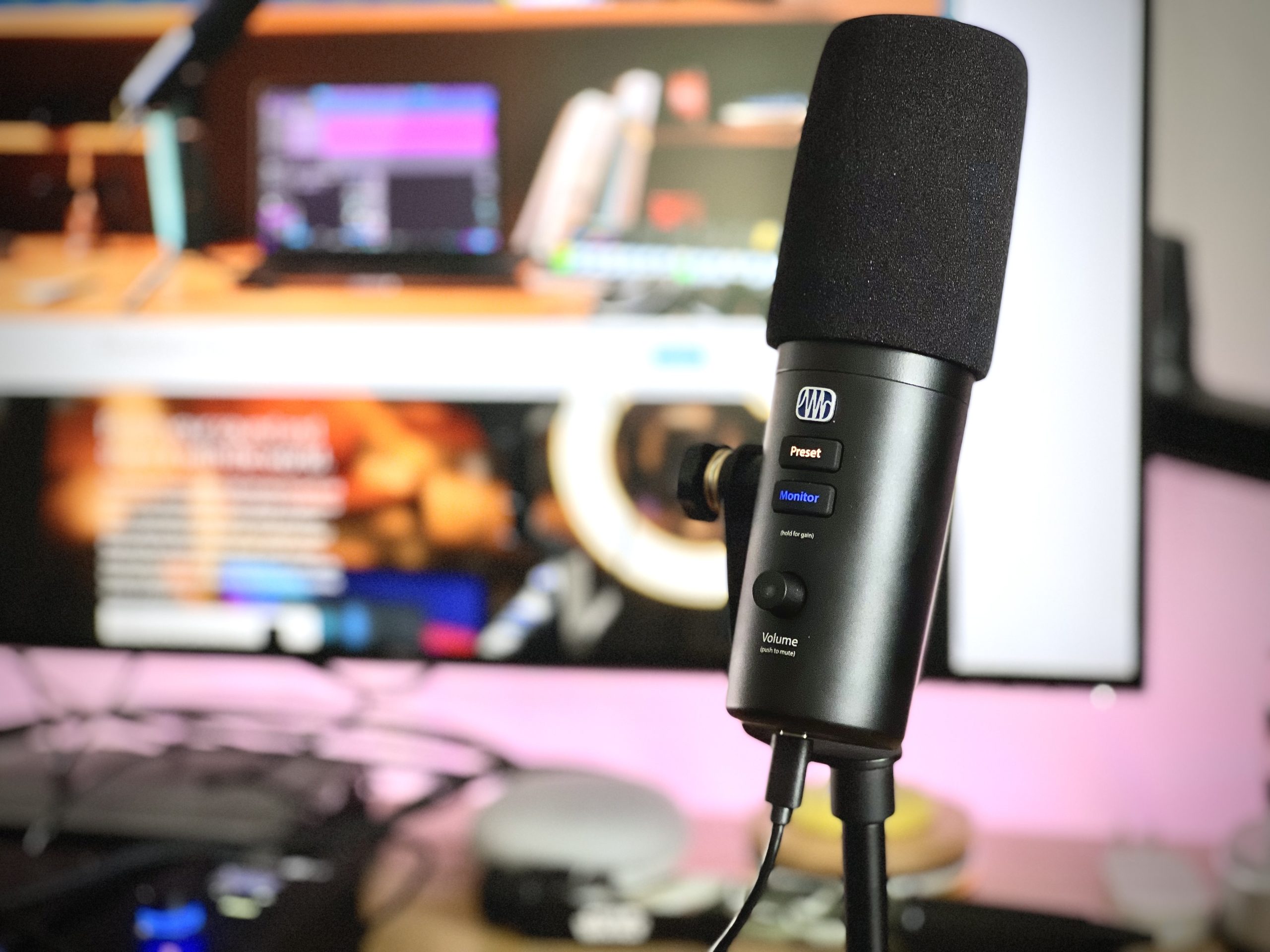
Summary
The Revelator Dynamic is the USB mic that answers streamers’ prayers. A great-sounding mic combined with top-notch onboard effects in an easy-to-use setup with built-in audio routing ensures all your streaming audio needs are met.


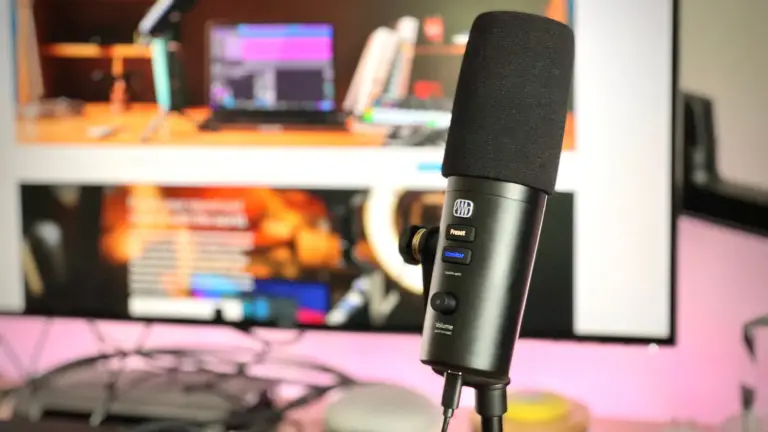


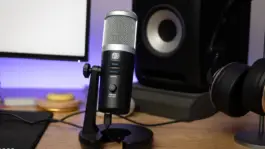
![21 Best microphones for streaming and podcasting [2022]](https://www.creatorbeat.com/wp-content/uploads/2019/08/Creatorbeat-Best-Microphones-For-Live-Streaming-1200x628-Blog-265x139.png)
